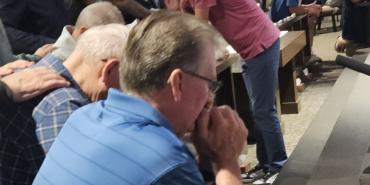Research in the Church of the Nazarene

Statistics are part of the Church of the Nazarene. The groups that united at Pilot Point had kept meticulous records for years. At each annual assembly, leaders carefully preserved membership data, finances, and even lay leader addresses.
Church leaders studied this information to gauge the spread of scriptural holiness. At the 1948 general assembly, graphs by layman J. Howard Sloan showed how membership was about to plateau in the United States, Canada, and the British Isles.¹ With this information, and an inspirational challenge from General Superintendent J. B. Chapman,² also backed by statistical research, the denomination responded with its best decade of church planting to that point.
Additional studies were done throughout the denomination's first seventy years, usually as independent projects commissioned by Headquarters offices or the Board of General Superintendents. In the mid-1970s, the Home Mission department encouraged local churches to study their progress. In 1977, the denomination hired a statistical analyst to coordinate these efforts. To help churches find the resources they needed, Headquarters established databases that included census data, reports from other religious groups, and Nazarene statistics.
In the 1980s, the Research Center became part of the Church Growth Division. Besides providing basic data for local churches, the center's four employees prepared user-friendly charts, graphs, and maps for use throughout the denomination. With the aid of computers and the use of the Internet, this department could now offer some services to churches worldwide. The Center provided survey research as well, through sponsoring the Association of Nazarene Sociologists and Researchers.
Meanwhile, the Church Growth Research Center gained recognition in the larger American religious community. Several denominations now use Nazarene programs as models, and the staff is often consulted when groups make their data available on-line. The Center has been involved in several national religious studies.³ The Research Center, now directly part of the General Secretary's office, believes that knowledge is power, and we must share that power with the denomination.
How may we serve you?
¹Journal of the Twelfth Assembly of the Church of the Nazarene, pp. 248-256.
²All Out for Souls, 1946
³Churches and Church Members in the United States, 1990; Religious Congregations and Membership in the United States, 2000; Faith Communities Today (FACT); U.S. Congregational Life Survey
Holiness Today, September/October 2005
Please note: This article was originally published in 2005. All facts, figures, and titles were accurate to the best of our knowledge at that time but may have since changed.




